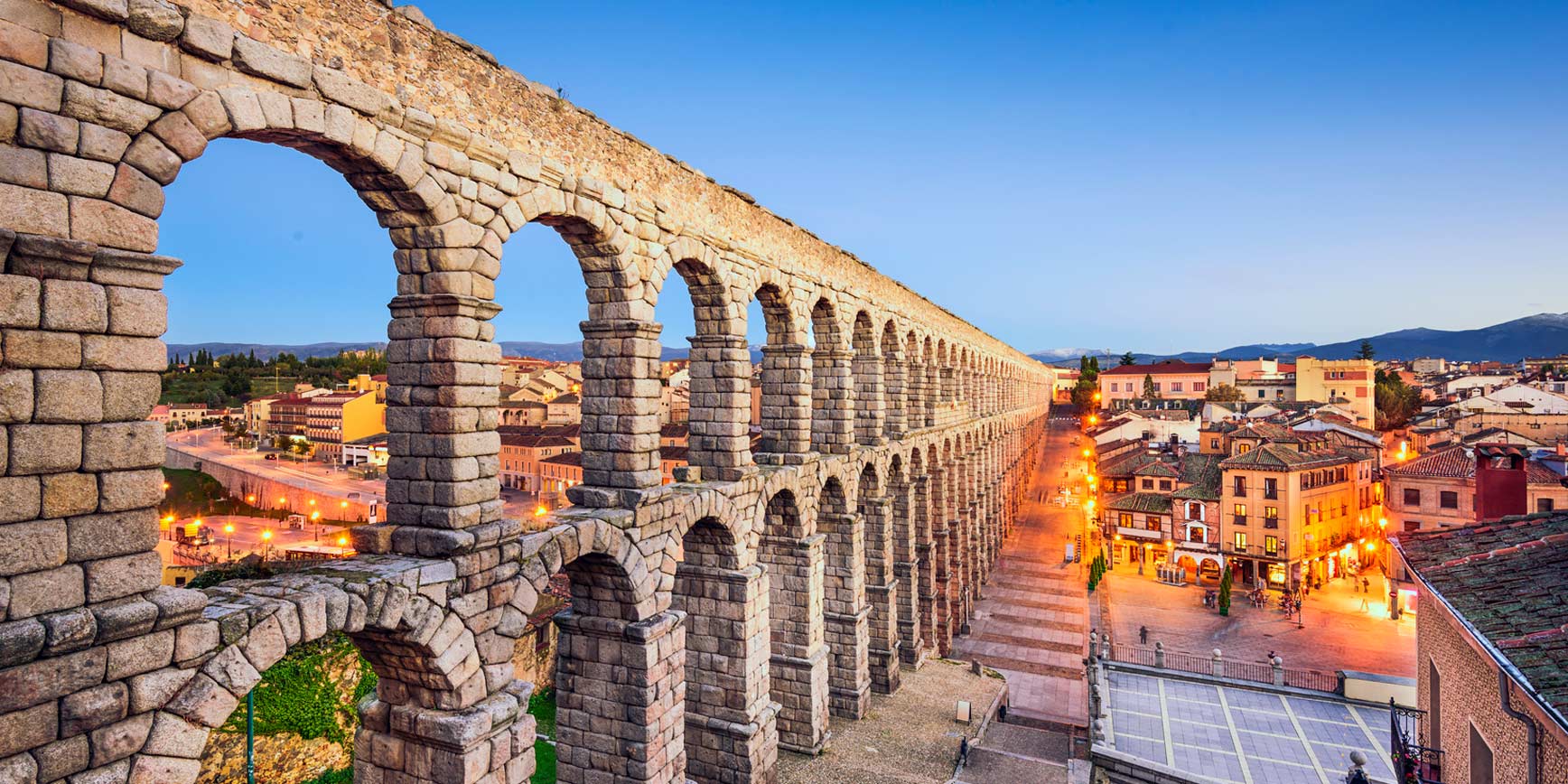Acueducto Romano de Segovia
The Aqueduct of Segovia is one of the most significant and best preserved of those that the Romans left in the Iberian Peninsula. It is probably the most important symbol to the people of Segovia.
Iglesia de la Veracruz de los Templarios
Es un lugar de poder de los pocos que existen en la península ibérica. Los templarios escogieron este emplazamiento de las afueras de Segovia para edificar la iglesia de la Vera Cruz porque concentraba una fuerza telúrica de dimensiones desconocidas. Leva
Alcázar de Segovia
The Alcazar of Segovia is one of the most prominent monuments in Spain, which is rise on a hill at the confluence of the rivers Eresma and Clamores. Built between the twelfth and sixteenth centuries, was restored and expanded numerous times.
La Granja de San Ildefonso
There is a place created to delight the senses, a microclimate wrapped in granite, pine and oak. Little Versailles created to delight and solace of the first Bourbon of Spain in the Baroque and it is open to everyone.
Palacio de Riofrío
Nine kilometers of San Ildefonso-La Granja is located the Palace of Riofrio, which was a whim of Elizabeth Farnese, stepmother of Fernando VI. It is surrounded by a forest with wild deer.
Castillo de Turégano
Es uno de los castillos más originales de España al incorporar en su interior una no menos notable iglesia románica de tres naves, planta poco habitual en la provincia de Segovia. Fueron declarados Monumentos por el Estado en 1931.
Navafría
Mountain village under the mantle of pine that has its name, with an average altitude of over 1,200 meters. in the heart of the Mountain Chain of Guadarrama. Nature, art, rural and active tourism with excellent cuisine, with easy communication and access
Pedraza
Silence, rest, pleasure. All the senses are mixed in this perfectly preserved medieval ensemble and orchestrate between the arcaded Plaza Mayor, Castle or the Jail that astonish and fascinate to any visitor.
Lagunas de Cantalejo
Se encuentran situadas en la zona centro norte de la provincia de Segovia, en un área situada al oeste de la población y a una distancia comprendida
entre 4 y 5 km. de ella. Existen un total de veintidós lagunas más algunas otras desaparecidas.
Monasterio de Santa María de Nieva
Church and cloister are part of an ancient Roman Dominican monastery. In the church is seen the use of different styles (from the Romanesque to the Gothic and Mudéjar elements). The north porch and the capitals have remarkable iconography.
El Espinar
The municipality of El Espinar, the largest in the province of Segovia, presents a great diversity of landscapes and ecosystems, inherited from centuries of coexistence between man and the environment, worthy to be known and preserved.
Cueva de los Enebralejos
The holly tree of Prádena is located underground. There is a world of beauty Metal Age, one of the largest stalactites and stalagmites in the Northern half. More than three miles of caves remember that past that we can...
San Sebastián de Villacastín
La iglesia es tardogótica en su interior y herreriana por fuera. Comenzose a construir en 1529. Rodrigo Gil de Hontañón es el arquitecto de la estructura tardogótica y el jerónimo fray Antón de Villacastín el encargado del aspecto exterior renacentista.
Sepúlveda, Conjunto Histórico-Artístico
Since 1951 Sepulveda was declared as a Historic-Artistic Site. Important starting point is to run the Natural Park of the Duratón River and good dining with roast lamb in wooden oven.
Hoces del Río Duratón
A walk through the Duratón invites to the visitors to immerse themselves in a magical place where different geographical environments that the diversity has been creating and leaving all in which we will see vultures and herons are mixed.
ALQUERIA DE SEGOVIA - Aviso legal - Política de privacidad - Política de cookies
- by RuralesDATA
- Panel de control

 EN
EN  ES
ES 





